South Australia, also known as the festival state, is home to some of Australia’s best food and cultural festivals. We went wine tasting, met some of the native wildlife up close, and enjoyed its natural wonders. It’s the state where we started our amazing road trip through the Outback, filled with awe-inspiring views and great hikes, but scorching heat and lots of flies as well. Below, we’ll tell you all about our SA experience and some of our favourite things to do in South Australia.
Warning: There might be a lot of flies in the Outback, but there are no fruit flies in South Australia. In order to keep it that way, and protect agricultural industries from pests and diseases, it’s prohibited to bring fresh fruits, vegetables and other plants into the state. Signs warn you about these regulations, and quarantine stations and disposal bins are located at state entry points. Be a responsible traveller!
Visit South Australia’s capital: laid-back Adelaide
We really enjoyed our short visit to Adelaide: the city was alive with Adelaide Fringe being in full swing, and the atmosphere was relaxed. For those of you that never heard of Adelaide Fringe (don’t worry, me neither until right before our visit), it’s a four-week cultural festival housing art, magic, comedy, music, and other shows. The festival takes place all over Adelaide and everyone seems to participate. Definitely worth it to take part! We were stunned at Matt Tarrant’s magic show, laughed out loud at the improv and comedy shows, and enjoyed the projections of Fringe Illuminations. Read more about our fun nights and the practical stuff in our blogpost “Art, Comedy & Magic at Adelaide Fringe”.
Apart from this awesome festival, we explored Adelaide by geocaching our way through the city. We especially enjoyed the view at Colonel Light's Statue on Montefiore Hill, looking out over the Adelaide Oval. Don’t forget to check out Adelaide Central Market, an undercover market selling fresh produce, but you can skip Adelaide’s museums in our opinion. Enjoy the peace and quiet at the Adelaide Botanic Garden, or do some (window)shopping in one of the most vibrant parts of the city: Rundle Mall Precinct.
Meet some native wildlife
After about a month in Australia we had seen more dead kangaroos than alive ones. And the roos that still happily hopped around were not that keen on posing for our photos. An opportunity to get close to these amazing animals came around on our way from Port Elliot to Adelaide: Urimbirra Wildlife Park. For an entrance fee of only $14 per person (adult rate), we got to hand feed kangaroos, pet koalas and admire tons of other native Australian animals. We had a great time!
To enter this great wildlife park, we had to pass through the souvenir shop where a very enthusiastic lady welcomed us. We got a map of the park and bought a bag of kangaroo food for $1. Time to start exploring! As the lady warned us, we were greeting by a couple of kangaroos hanging out by the entrance, knowing there would appear creatures with food at some point. We passed the black cockatoos, walked through the lorikeet aviary and saw our first cassowary: big birds, a little scary, with very bright blue and red coloured heads. We saw small emus (not as big as the ones we saw at Tower Hill Reserve in Victoria), a pelican, Australian white ibises, and even peacocks, unfortunately with closed tails.
In and near the reptile house we spotted snakes, lizards, a goanna, and crocodiles. The echidnas and wombats wouldn’t come out of their hiding places, and we only saw one dingo from afar. However, the coolest animal in the park was out and about, hopping around or lounging in the shade: the kangaroos. We could just walk among them and feed them from our hand. It was a lot of fun, but washing your hands afterwards is a must, as they salivate a lot. One of them got impatient while we were feeding his friends and ripped the bag with food from Brecht’s hand and ate it, bag and all! We were a bit worried, but the park ranger told us that’s why the food is sold in paper bags. They eat leaves and bark as well, and paper is tree, so no worries.
The close runner-up for coolest animal in Urimbirra Wildlife Park, and probably whole Australia, are the koalas. Every day at 11h, 14h, and 16h it’s koala feeding time, where you get to pet them, watch them eat and take a couple of selfies. They eat eucalyptus leaves from the branches that the park ranger puts in bags hanging from their climbing frame. Don’t touch the leaves though, because they won’t eat them anymore, as their scent is contaminated. Being able to pet them and see them from up close instead of up high in the trees was really amazing, they’re bigger than expected and so soft! If you like to meet some Australian native animals, feed them and make some great pictures, Urimbirra Wildlife Park is the place to be. We had a lot of fun there!
Although they seem to take good care of the animals at Urimbirra Wildlife Park, it’s a whole different experience to watch wildlife in their natural habitat, roaming free. That’s why we paid a short visit to Port Adelaide on our way from Adelaide to Port Augusta, for their all year round dolphin spotting. We picked up a map about the Dolphin Trail at the Port Adelaide Visitor Information Centre and started our quest for the wild bottlenose dolphins living in the Port River estuary. For more information about the Dolphin Trail and our visit to Port Adelaide, you can head over to another one of our blogposts, but we assure you it’s worth it! We saw at least six dolphins at different dolphin hot spots along the trail, and we didn’t even have to display a whole lot of patience.
Check out South Australia’s natural wonders
About 20km West of the Victorian border there’s Mount Gambier, best known for its iconic Blue Lake. This crater lake was formed after a volcanic eruption about 4800 years ago. They haven’t found an explanation for the colour of its water, which is so bright blue you’d think they added artificial colouring. If you want to behold this awe-inspiring view, you have to visit during summertime, as in winter the colour changes to grey. If you want to get away from the tourists crowding the viewing platforms surrounding the Blue Lake, you can visit its less popular brother Valley Lake, another crater lake. Even though its water looks green and dirty, it’s a nice and quiet place, perfect for a picnic.
Another natural rarity in Mount Gambier is the Umpherston Sinkhole, aka The Sunken Gardens. You already guessed it, it’s a garden that has sunk meters below the surface. You can watch it from the top or descend the stairs and walk through this lush garden. If you like a challenge, try and find the sneaky geocache that’s hidden there. We did, but only after we had actually given up the search. Good luck!
South Australian summer days can get quite hot, so we pulled over at Maslin Beach for a refreshing dip before reaching Adelaide. The view from the Maslin Beach Lookout was amazing, the sea was real quiet, there were almost no waves. Over 40 years ago part of this beautiful beach was declared Australia’s first nude beach. I needed some persuading, but I gave in and we headed over to the unclad bathing area. There were mostly older people and we felt a little bit watched at first, but in the end it was a fun experience. The water was a bit cold to get in, but once you’re in the temperature is perfect and the clarity is amazing. One of the convenient things about a nude beach: you don’t have to change, just undress, and no hassle with wet bathing clothes in your campervan. We recommend everyone to give it a try!
South Australia: Australia’s wine and food capital
For our first Australian wine tasting we went on a day trip to the Barossa Valley. On our way over from Adelaide, we took a small detour via The Big Rocking Horse, one of the famous big things in Australia, and The Whispering Wall, an arch dam carrying your whispers over the entire length of its curved wall. In the Barossa Valley we took the Scenic Drive, a route leading us along different wineries and vineyards, to great views. For information about the stops along the route and our experiences in the wineries, you can read our blogpost “Wine Tasting in the Barossa Valley”. We can already reveal our favourite winery: Peter Lehmann Wines.
To be honest, we didn’t ate out that much in South Australia, so we can’t tell you a lot about it being Australia’s food capital. However, we can tell you that we really enjoyed our lunch at the Alexandrina Cheese Company. We both love cheese, and after a more or less cheeseless four months in Southeast Asia, we were very happy to be eating cheese again in Australia. After a stop at Urimbirra Wildlife Park, on our way from Port Elliot to Adelaide, we got hungry from feeding the kangaroos, so headed over to the Alexandrina Cheese Company for lunch. In their shop you can buy cheese, milkshakes and other dairy products made from rich, creamy milk from dozens of Jersey cows living on the family farm. According to their website all the cows even have a name!
Upon arrival we were greeted by a very friendly lady, offering us a little cheese tasting of eight different handmade cheeses. We were quite impressed and decided to eat in, ordering the Cheesemaker’s Choice Platter ($26, serves 2-3 people). We got a nice cheese platter with five different cheeses, a heavenly apple chutney, and some nuts, grapes, and crackers. The staff was very friendly and told us beforehand they could give us a container to take the leftovers home, which we did. Brecht’s favourite was the Mount Jagged Mature Cheddar, mine the Fresh Cheddar Curd. Before leaving, we couldn’t help but order a yum raspberry milkshake to go ($4). Alexandrina Cheese Company is definitely a must for every cheese lover!
Pause your SA road trip at these short stops
Adelaide is a little too far from Portland to comfortably drive in one day in our campervan, so we stayed in Robe for one night. Robe is a charming little village with a history in seafaring, situated on the Limestone Coast. In a short afternoon we saw everything worth to visit and ate a delicious ice cream at Robe Ice Cream & Lolly. We drove to the Cape Dombey Obelisk, which is Robe’s icon, but possible not long around anymore as the land around it is eroding. Before reaching this great view, you’ll see the Old Robe Goal on your left. Other things to see in Robe are the beautifully white Long Beach and the great view over the city from the Beacon Hill Lookout.
From Robe we headed over to Port Elliot, passing by endless planted forests making for wonderful views. We pulled over in Kingston to visit Larry The Big Lobster, another one of the famous big things in Australia, erected in 1979. At that moment he was being treated by the “lobster doctors”, thus undergoing some restoration works. From here Coorong National Park stretches out to the northwest, along the Limestone Coast. We didn’t see a lot from this National Park, apart from Chinamans Well, where the Chinese passed through in the gold rush era.
Around noon we stopped at Meningie Lions Jubilee Park, located on the shores of Lake Albert. It’s a beautiful spot for a picnic, with picnic tables, barbies, and toilets. That is, if you don’t mind the noisy sulphur-crested cockatoos up in the trees. There are some geocaches in the neighbourhood as well. To get to Port Elliot from here, you have two options: taking a slightly faster detour over the bridge, or cross the Murray River on the Wellington Ferry. We opted for the Wellington Ferry, as we never took a ferry before and this one is free. We queued longer than we were actually on the ferry, but we do recommend you to choose this route as well!
When driving from Adelaide to Port Augusta, we pulled over to behold The Monster of Lochiel. Granted, we would have passed it by without noticing if there wasn’t a geocache hidden, but now you know where to look.
The Outback-part of South Australia
In South Australia we started our road trip through the Outback, which was definitely an experience to never forget. Our only stop in the Outback-part of South Australia was Coober Pedy, the opal mining town where a large part of the residents live underground. We have a lot to share about this interesting town, so blogposts about our visit to Coober Pedy and our road trip through the Outback will follow soon.
The highlights of the South Australian leg of our road trip were meeting the kangaroos and koalas at the Urimbirra Wildlife Park, skinny dipping at Maslin Beach, and wine tasting in the Barossa Valley. Adelaide Fringe was a lot of fun as well, and the Blue Lake in Mount Gambier was absolutely stunning. And this was only a fraction of everything there’s to do in South Australia. No doubt you’ll have a great time!


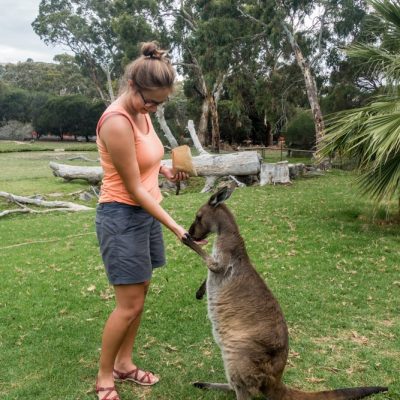

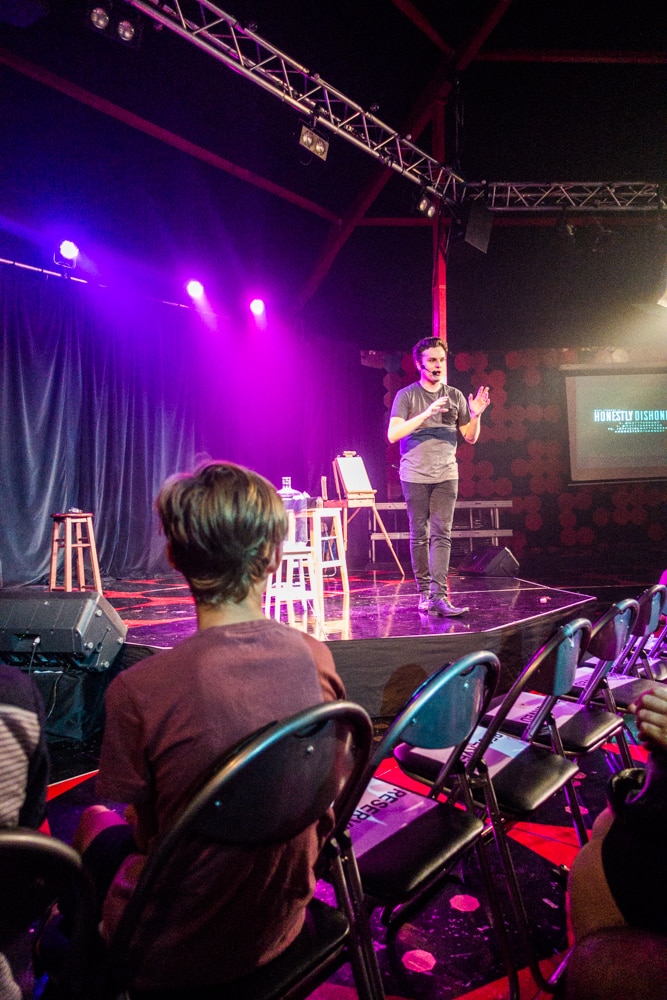



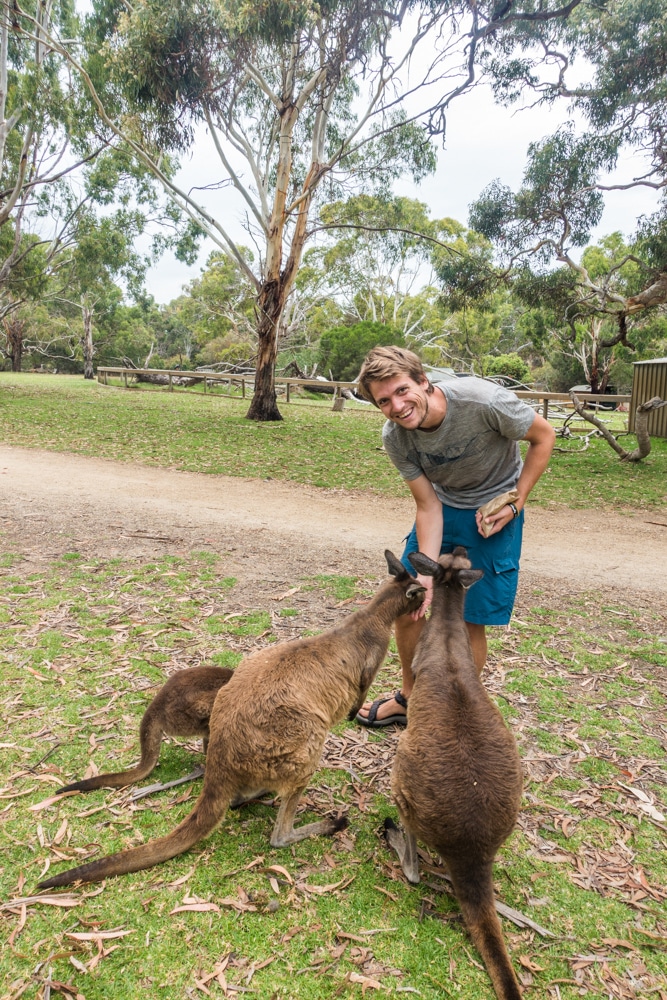
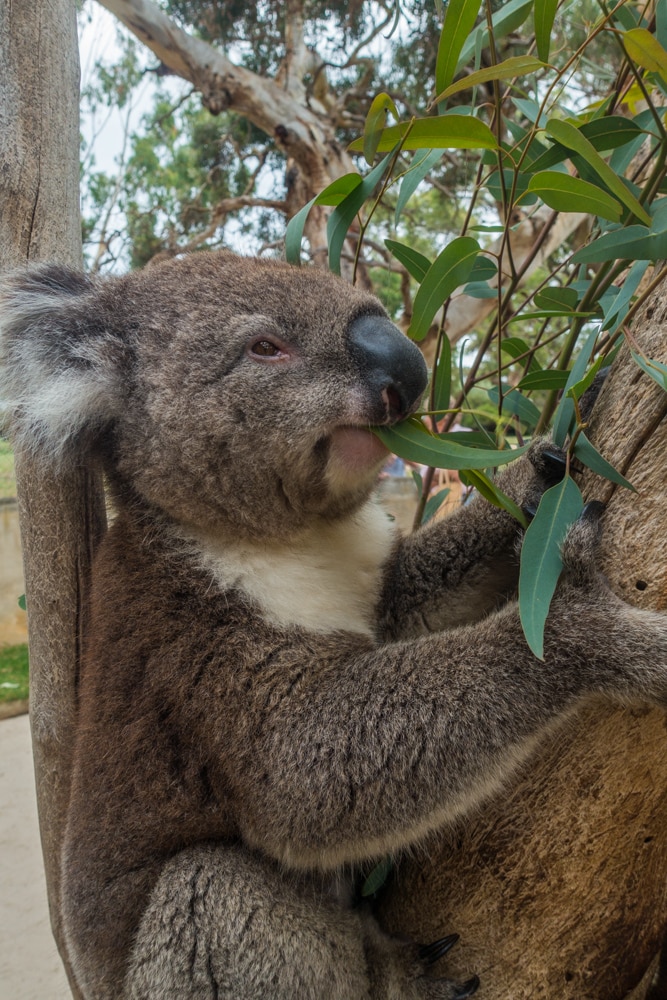
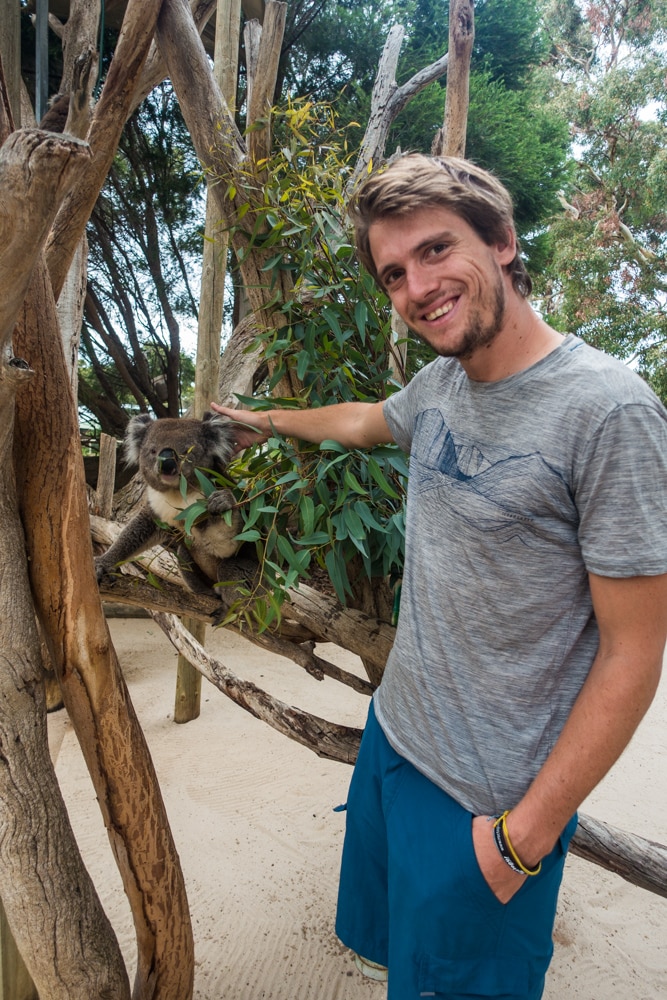


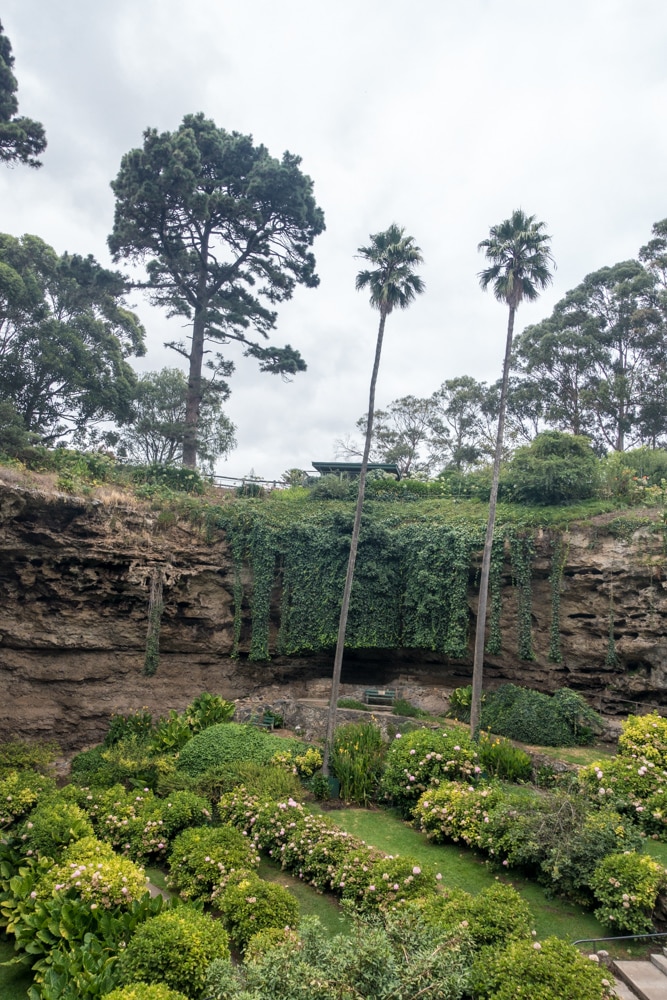

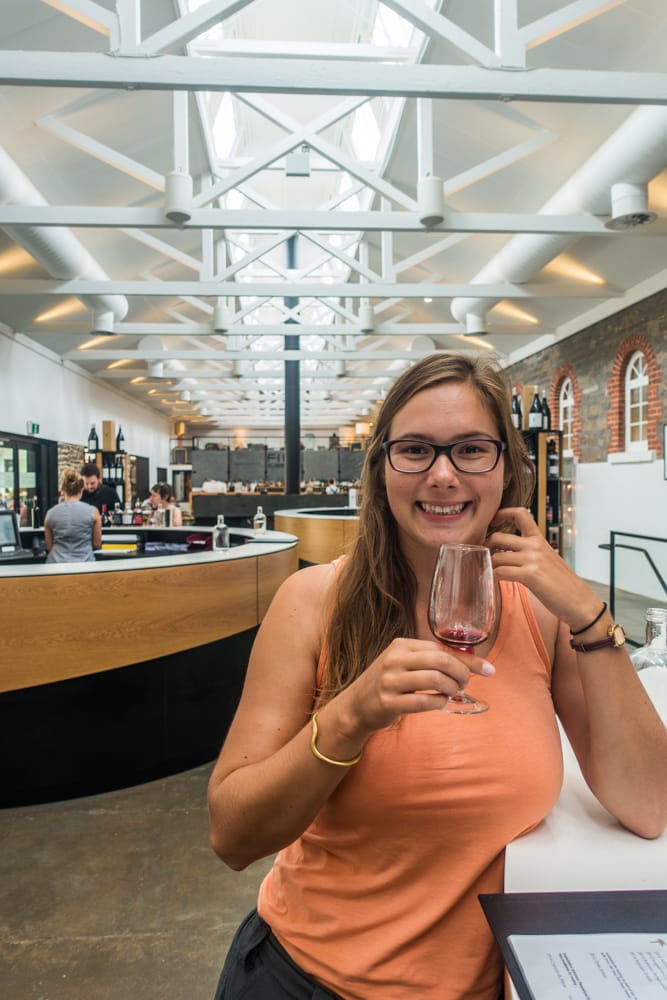

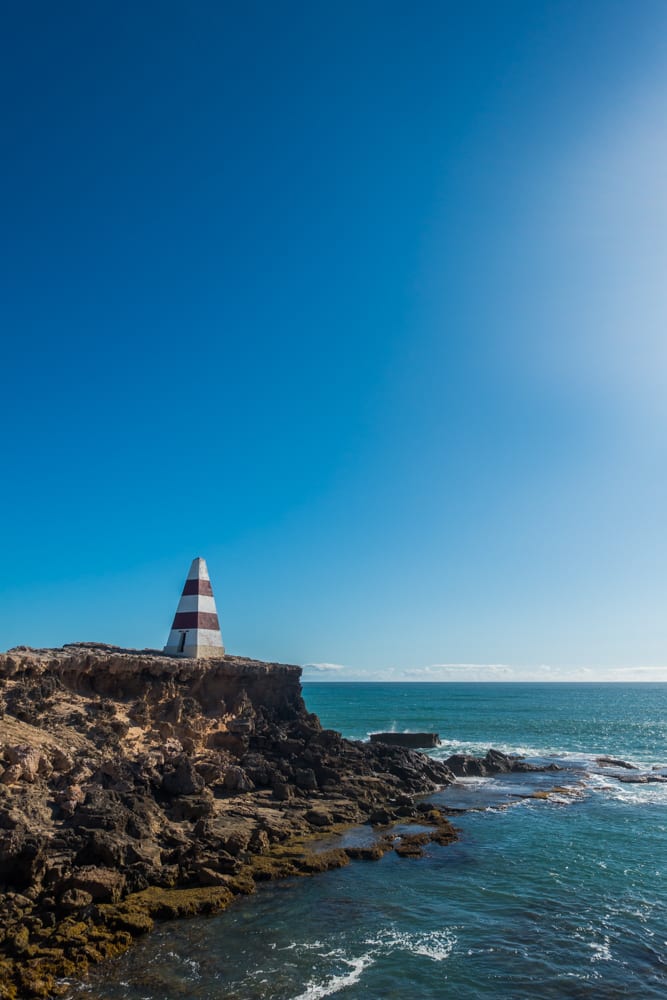

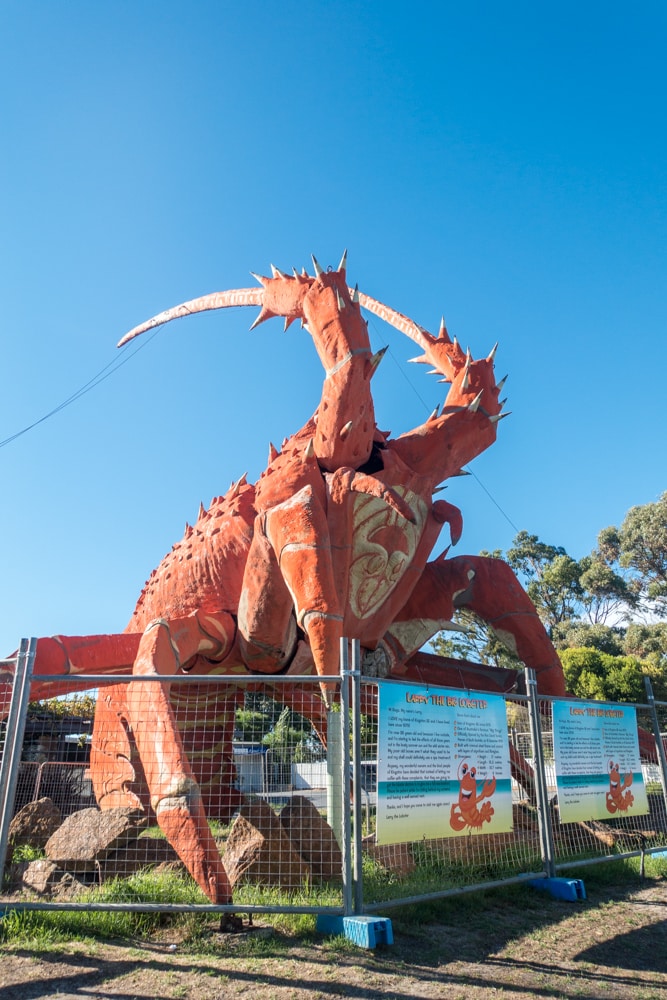
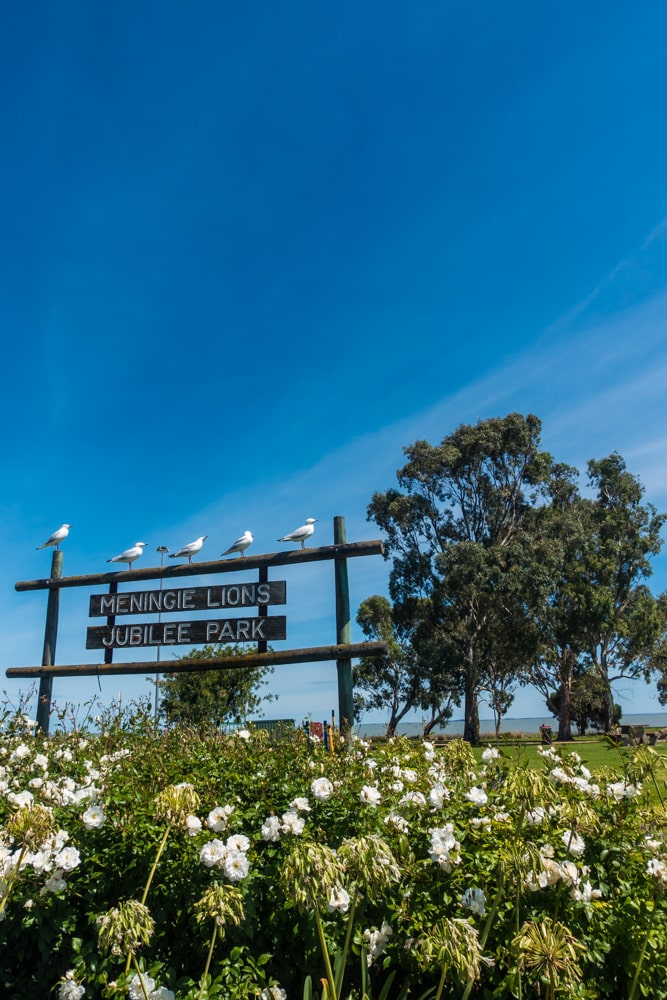


De lucht echt zo blauw of hebben jullie wat gefotoshopt?
Prachtig!!
Alleen windowshopping? Lijkt thans de moeite op de site te zien…
Echt zo blauw! En niet veel plaats in de rugzak voor meer dan windowshoppen. 🙂